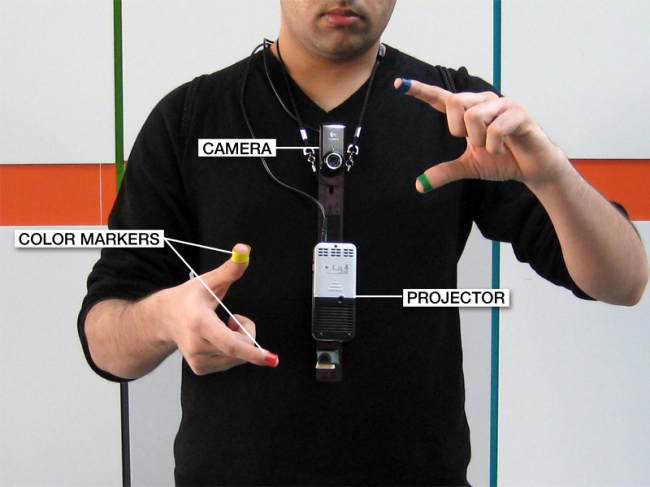Augmented reality is the integration of the digital world, usually graphics and interactive media, into the physical world. This technology is very new, and almost seems like a product of science fiction. It is, however, very real. Many people are familiar at this point with the concept of Google Glasses, but there are other, less known AR projects as well.
The MIT Media Lab has created a product they term ‘SixthSense’. “It is a wearable gestural interface that augments the physical world around us with digital information and lets us use natural hand gestures to interact with that information (Pranav Mistry, MIT Media Lab)”.
The essence of the SixthSense project is this: humans have evolved to have five senses, which we use to observe and interact with the world around us. SixthSense enables us to add another dimension to our interactions with the world, bringing digital information to our most basic sensory level.
This device consists of a pocket projector, a mirror, and a camera in a wearable device that couples with your smartphone or other mobile computing device.
There is a danger of over-saturation with such technology. As we are able to move more and more digital content from that realm and integrate it with our lives, we begin to interact more with computers and less with people. Augmented reality could have interesting applications for those with disabilities. It is also useful for those in the law-enforcement and military spheres. Right now, it seems to me that this technology solves a problem that really does not exist.
If you want to know more about this device, you can visit the MIT Media Lab Site.
You can also view the creator delivering a TedTalk about his device.





